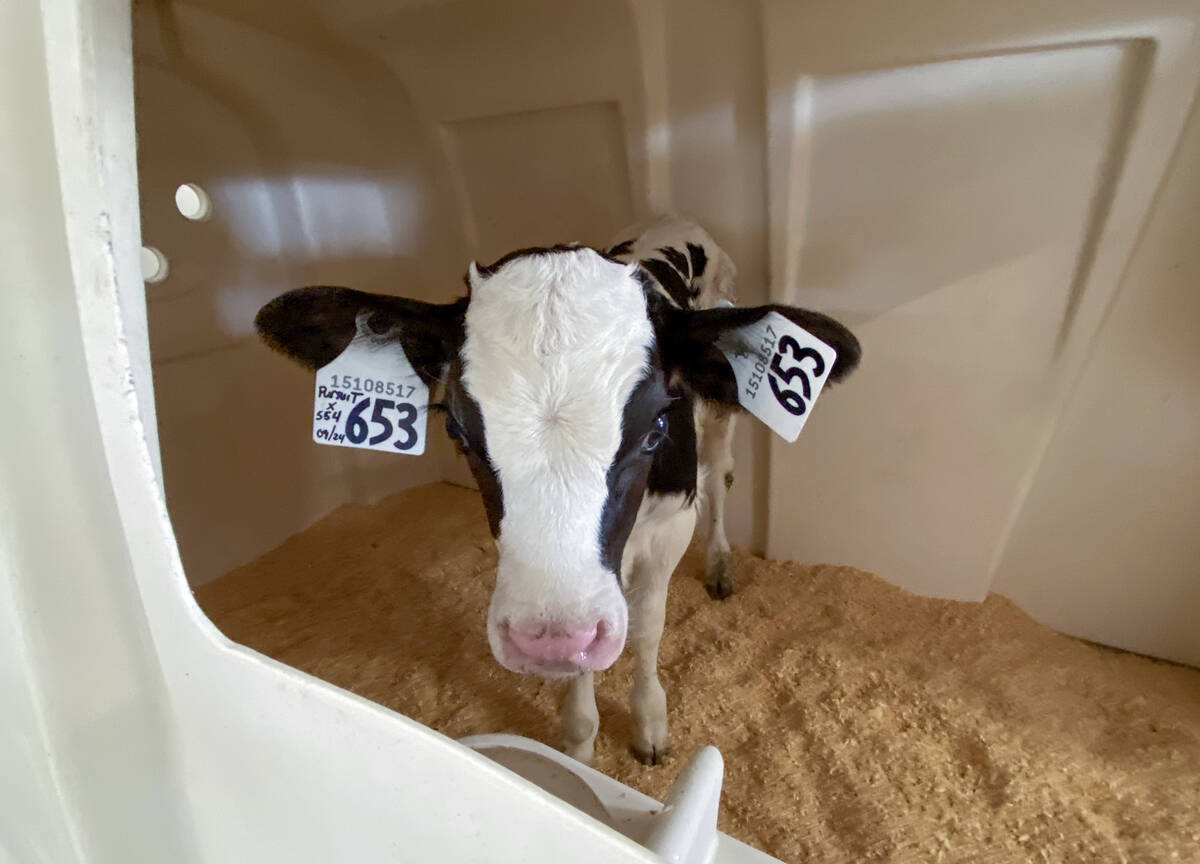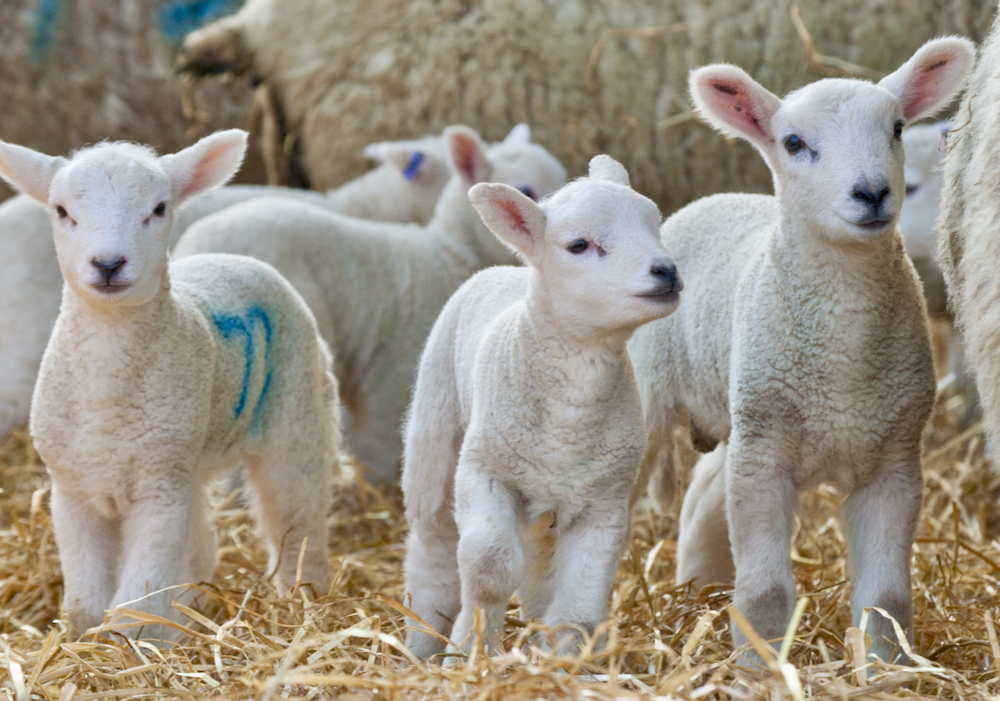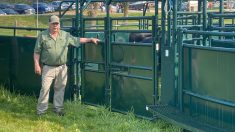When it comes to which breeding system a sheep producer chooses, it’s individual to a particular operation, according to panelists at the recent Grey Bruce Farmers’ Week Sheep Day.
“It is a complex decision; there is a lot of moving parts. A lot of things that are different for each farm and each individual,” said panelist Delma Kennedy, sheep specialist with the Ontario Ministry of Agriculture, Food and Rural Affairs (OMAFRA).
Kennedy was joined by sheep producers Drew Tyler and Ben Bartley, who shared their insight into how an annual or accelerated breeding program fits into their farm operations.
Read Also

Lactanet turns methane expertise into business opportunity
Lactanet’s new fee-for-service breeding tool initiative to reduce greenhouse gas emissions in Canadian and Swiss Holstein herds will launch in April 2026.
Why it matters: Choosing a breeding system requires sheep producers consider their operation’s labour, profits, land and building access.
Tyler said the approach shouldn’t be one system versus another but rather the importance of figuring out where you want to be and committing to that. He runs a cash-crop livestock operation with 110 Rideau ewes and terminal Suffolk rams on a confinement-grazing hybrid system, lambing four times a year.
“You need to figure out where you want to be. Plow horses don’t win derbies, and thoroughbreds don’t pull plows, but they both have their uses.”
Tyler is a consultant with EastGen and a full-time dad in addition to being a cash crop and sheep farmer, so time and labour demands influence his management decisions.
“The goal is to put as many pounds of lamb on a truck as possible, as efficiently as possible,” he said.
“Most of what my sheep eat throughout the year is oat cover crop. We do grow some hay. If I need it, I feed it. If I don’t, I sell it as a cash crop.”
When necessary, he rolls out a bale in the H-bunk every two days, supplementing with corn and soybean meal, and provides winter corn stalk grazing when the ground is fit.
Tyler uses four-day staggered controlled intravaginal drug releases (CIDRs) for out-of-season breeding and rams for in-season, lambing last in December and restarting in March because “frozen lambs don’t make much money.”
“I can handle five ewes lambing at once and still get to work on time and meet my other commitments.
“CIDRs give me the luxury of staggering out a group over about two weeks.”
Additionally, staggered CIDRs ensure ewes in the best condition are first, and skinnier ewes have an extra three weeks for conditioning.
“If nutrition isn’t bang on when they’re lactating, and you go to breed them back, the next time, that’s what makes or breaks my conception rate,” Tyler explained, adding he buys replacements from reputable producers because it’s less expensive than raising them.
Prolific ewes with an extended natural season are ideal for accelerated systems because high conception and weaning rates drive profit to cover infrastructure costs, said Kennedy.
“(Track those) rates to make sure you’re actually doing better than an annual system,” she advised. “If you’re going to put all this effort in, you have to make sure you’re actually selling more lambs in the long run, and it’s working out for you.”
Kennedy added annual producers should have trouble-free operations before switching to an accelerated program because lambing and mortality issues will only multiply.
Knowing which breed fits your system best is a game-changer, Bartley added, admitting it took a few tries to find a producer running a similar system to purchase ewes from.
Seven years ago, Bartley added 10 outdoor sheep to his swine operation near Clifford. This May, he’ll lamb 1,400 ewes from a Dorset and North Country Cheviot mixed flock.
“Trying to handle a mob of 1,000 is quite a bit different than 500,” Bartley laughed. “We realized we had to make some changes.”
Despite the meteoric flock expansion, Bartley’s year-round outside system focuses on low input, whether it’s time investment, infrastructure costs near zero, or feed. He rotationally grazes 170 acres of permanent pasture and 60 acres of marginal, forest and swamp land, cover crops, a mobile sort yard, fencing and dogs for flock predation protection.
“Our double-deck straight truck would probably get used more than a tractor on our farm just hauling sheep around,” Bartley laughed.
He pulled sheep off the pasture on Jan. 4 and estimates from January to April, it costs $45/head in stored feed. From May to August, it’s $32/head, factoring in potential loss of land rent profit and September to December cover crops cost of $12/head.
Parasites, not predation, is Bartley’s largest sheep health concern, and he uses a combination of dewormers in tandem with a three-day maximum pasture rotation with 30 to 40 days rest in between.
“The nice thing is what’s good for preventing parasites is also beneficial for grass growth,” he said, adding parasite levels creep up even with four passes a year, but cover crops are a game-changer.
After weaning in September, ewes move to 450 acres of knee-high oat cover crops and corn stalks to graze, while lambs are sent to a custom lamb feeder with an 800-lamb capacity barn to get Christmas market-ready.
Bartley uses solar power, sort wagons, and net fencing to construct 15-to-20-acre cover crop paddocks that feed 1,200 ewes at two-and-a-half to five acres/day for five days depending on cover crop quality, costing him approximately $ .06 to $0.16 a head/day.
Tyler said direct marketing taught him more pounds pay, fat lambs are expensive, and his Texels were fat.
“Which is why I switched to Suffolk,” he explained. “Texels would hit 100 pounds and then run outta gas, and ewes just got fat. Suffolk ram lamb Rideau crosses can go to 130 pounds and not quit.”
With a production goal of 2.6 or 2.7 lambs per ewe per year, Tyler’s annual objective is 40,000 pounds of lamb per 100 ewes and an average shipping weight of 115 pounds.
“My goal is to put uniform groups of blackface lambs through the sales barn every week or every other week,” he said. “(If packers are) making money and happy, they’ll come back and buy more uniform groups — lambs that all look the same, lambs that kill the same — everybody wins.”















